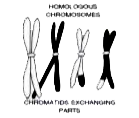name any one use of the phenomenon of beats.
Step-by-Step Solution:
1. Understanding the Phenomenon of Beats:
- Beats occur when two sound waves of slightly different frequencies interfere with each other. The result is a fluctuating sound intensity, which we perceive as beats.
2. Identifying an Application:
- One common application of the phenomenon of beats is in the tuning of musical instruments.
3. Explaining Tuning of Instruments:
- Tuning involves adjusting the frequencies of two instruments so that they match. For example, if we have two guitars, we want their frequencies (f1 and f2) to be equal.
4. Process of Tuning Using Beats:
- When two instruments are played together and their frequencies are not equal (f1 ≠ f2), beats will be heard. The number of beats heard per second is equal to the difference in their frequencies (|f1 - f2|).
5. Adjusting Frequencies:
- To tune the instruments, one instrument's frequency (let's say f2) is adjusted while keeping the other (f1) constant. The musician will listen for the beats.
6. Observing Changes in Beats:
- As the frequency of f2 is adjusted, the number of beats heard will change. If the beats decrease, it indicates that the frequencies are getting closer together.
7. Achieving Tuning:
- The process continues until the beats disappear entirely, which indicates that the two frequencies are equal (f1 = f2). At this point, the instruments are considered to be in tune.
8. Conclusion:
- Therefore, one use of the phenomenon of beats is to help in tuning musical instruments by adjusting their frequencies until they match.
- Beats occur when two sound waves of slightly different frequencies interfere with each other. The result is a fluctuating sound intensity, which we perceive as beats.
- One common application of the phenomenon of beats is in the tuning of musical instruments.
- Tuning involves adjusting the frequencies of two instruments so that they match. For example, if we have two guitars, we want their frequencies (f1 and f2) to be equal.
- When two instruments are played together and their frequencies are not equal (f1 ≠ f2), beats will be heard. The number of beats heard per second is equal to the difference in their frequencies (|f1 - f2|).
- To tune the instruments, one instrument's frequency (let's say f2) is adjusted while keeping the other (f1) constant. The musician will listen for the beats.
- As the frequency of f2 is adjusted, the number of beats heard will change. If the beats decrease, it indicates that the frequencies are getting closer together.
- The process continues until the beats disappear entirely, which indicates that the two frequencies are equal (f1 = f2). At this point, the instruments are considered to be in tune.
- Therefore, one use of the phenomenon of beats is to help in tuning musical instruments by adjusting their frequencies until they match.
Topper's Solved these Questions
- WAVE MOTIONBook:VMC MODULES ENGLISHChapter:WAVE MOTIONExercise:LEVEL-1
Explore 75 Videos
- WAVE MOTIONBook:VMC MODULES ENGLISHChapter:WAVE MOTIONExercise:LEVEL-2
Explore 41 Videos
- UNITS, MEASUREMENTS & ERRORSBook:VMC MODULES ENGLISHChapter:UNITS, MEASUREMENTS & ERRORSExercise:IN - CHAPTER EXERCISE - B
Explore 10 Videos
- WORK ENERGY AND POWER Book:VMC MODULES ENGLISHChapter:WORK ENERGY AND POWER Exercise:IMPECCABLE
Explore 54 Videos
Similar Questions
State any one use of the magnet.
View Solution(A) The rotation of Saturn's rings and of double stars has been detected using the phenomenon of beats.
(B) Megaphone and ear trumpet work on the principle of interference of sound.
View SolutionName one use of the mineral.
View SolutionName the metal obtained from Bauxite. Give any one use of the metal mentioned by you.
View SolutionThe diagram given below represents a certain phenomenon occurs during meiosis :

Name of the phenomenon
Define the phenomenon
State the difference between chromosome and chromatid
View SolutionExplain accelerated europhication. Mention any two consequences of this phenomenon
View SolutionName and define the phenomenon due to which disc and gold leaves acquire charge.
View SolutionName and explain the phenomenon that has resulted in the evolution of such diverse species in the region.
View SolutionWhich one of the following is not applicable to the phenomenon of adsorption?
View SolutionWhich one of the following does not exhibit the phenomenon of mutarotation ?
View Solution